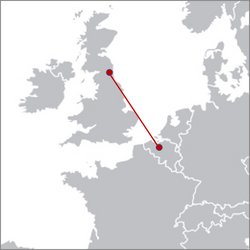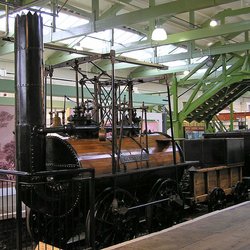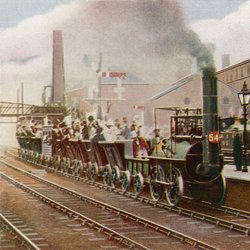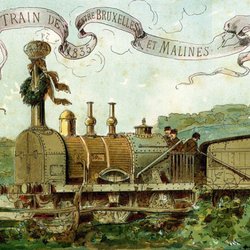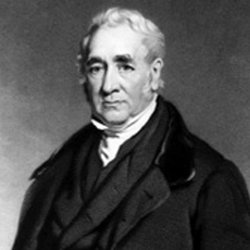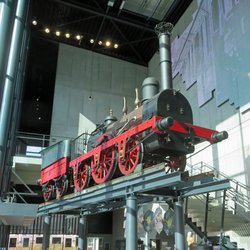George Stephenson gets Belgium's railways rolling
The world's first capital having its own railway service was - no, not London, but Brussels. However, it was an English locomotive that hauled one of the first trains operating on this particular route. George Stephenson (1781-1848), autodidact, inventor and most successful railway pioneer of the early 19th century, had already helped to make the world's first public railway between Stockton and Darlington a success in 1825 with his steam locomotive "Locomotion". He later built the railroad between Liverpool and Manchester, inaugurated in 1830 and setting standards for future railway lines with its double-track operation following a fixed timetable.
Stephenson's reputation reached as far as the young monarchy of Belgium, which seceded from the Netherlands in 1830. In terms of transportation, the Belgian King Leopold I opted for the new railway technology. Pierre Simons and Gustave De Ridder, the engineers he commissioned to build the 22 kilometre line between Brussels and Mechelen, relied heavily on the English model. When the line was officially opened on 5 May 1835 amid considerable public attention, it was again Stephenson's 'Locomotion' to pull one of the three trains carrying some 900 passengers.
The exciting story of this first scheduled steam passenger railway on the European mainland is told by the railway museum Train World in Schaerbeek near Brussels. The Locomotion in service at that time is kept in the Darlington Head of Steam Museum. Its inventor George Stephenson later assisted authorities and operators in the Netherlands, France, Germany, Italy and Spain to enter the new era of rail transport.

